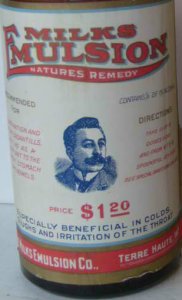
+(800x567).jpg)
The warm butter (which appeared glossy and squishy but not melted) blended well with the sugar and was the lightest in color of the creamed mixtures. There was no presence of “curdling” as the ingredients were well emulsified. When flour and room temperature milk were added the batter was thick and had a nice body to it. The room temperature butter (pliable but still well structured) mixed beautifully with the sugar and was creamy and light when the eggs were added. The batter was relatively thin as I poured it into the pan, an indicator that emulsification was not achieved. After addition of the dry ingredients and cold milk, the butter was still in bits, albeit tiny. Adding cold eggs helped a little in distributing the butter but pea-sized clumps were present following the egg beating time. After two minutes of beating I still had a central hunk of butter that had the outer edges beaten away. It was difficult to get cold butter to work into the sugar at all. I creamed the butter first with the sugar and then added the eggs. The first ingredient temperature differences were clear in the mixing of the batter. These temperatures give a sampling of butter in three different solid states. I decided not to work with temperatures above 80 degrees F to avoid melting the butter and bringing in an additional set of factors. What does all of this mean to your cake? Let’s find out! I baked three cakes with refrigerator temperature butter, eggs and milk (about 40 degrees F), room temperature ingredients (about 70 degrees F) and warm room temperature ingredients (around 80 degrees F). Too cold and it will dissolve very little, too warm and it will dissolve too much. Dissolving of ingredients – Sugar dissolves in varying degrees within a batter based on the temperature of the liquid ingredients. Cold butter, as noted above, doesn’t distribute well enough to emulsify properly and, as with all chemical processes, emulsification (via butter or eggs) occurs slower and less thoroughly in a chilled setting.ģ.

Emulsification – Both butter and egg yolks play an important role in the emulsification (joining of fats and liquids) of batter ingredients. If you stick butter in your batter straight from the fridge it will not distribute in your batter as well as room temperature butter and in turn will not properly coat flour proteins or allow for intake of air pockets during the beating process.Ģ. Ingredient fluidity – This is primarily a factor with butter since its level of plasticity changes greatly within a relatively narrow temperature range. Here are a few of the factors come into play when you alter ingredients temperatures:ġ. Typically in a hurry, I would think, “What difference does it really make?” I finally decided to challenge my rebellion and see what happens when you start with cold, room temperature or warm ingredients. While I generally comply with most of my ingredients, I admit I can often be caught tossing a cold egg or chilly milk into my batter. Most cake recipes prompt the baker to begin with room temperature ingredients. Our contributor, Summer Stone-Polzel of Cake Paper Party, is back today with a new baking science experiment….


 0 kommentar(er)
0 kommentar(er)
